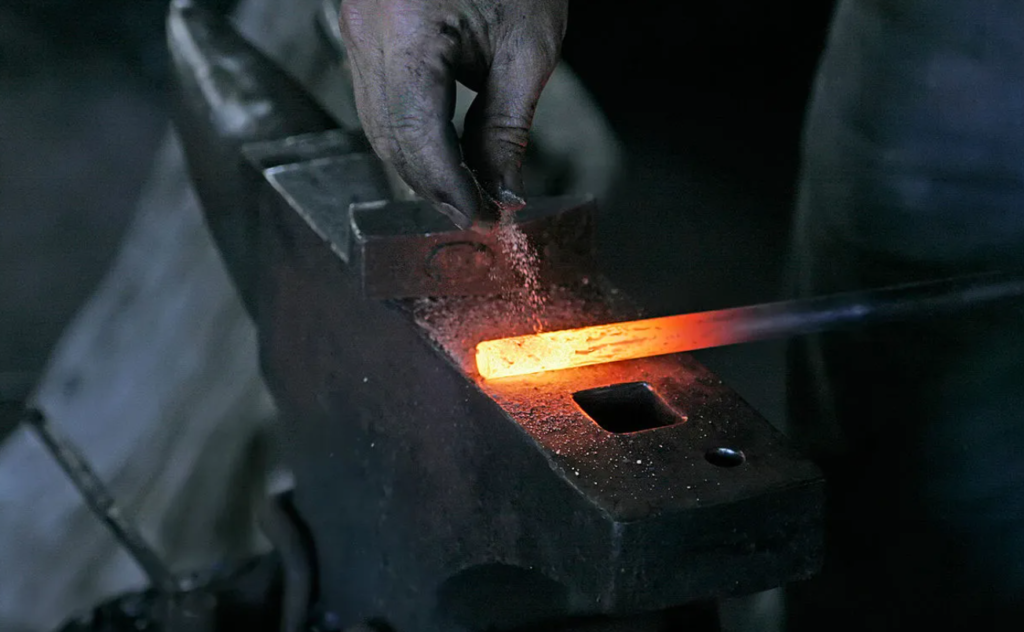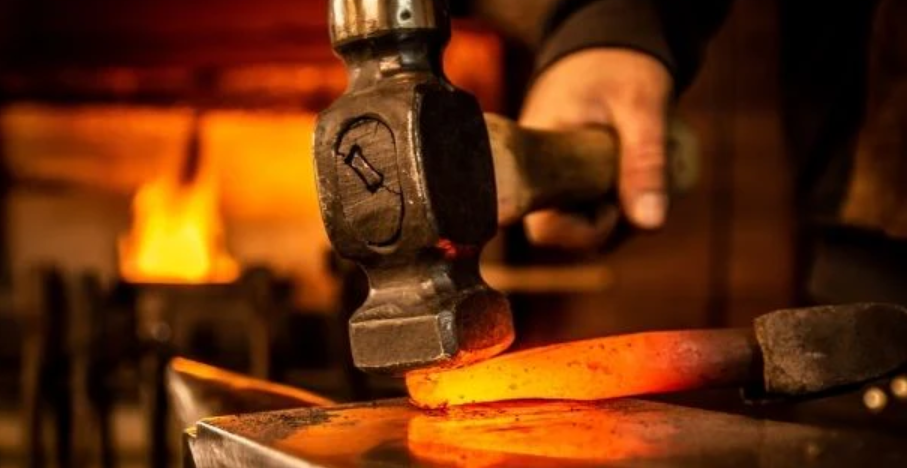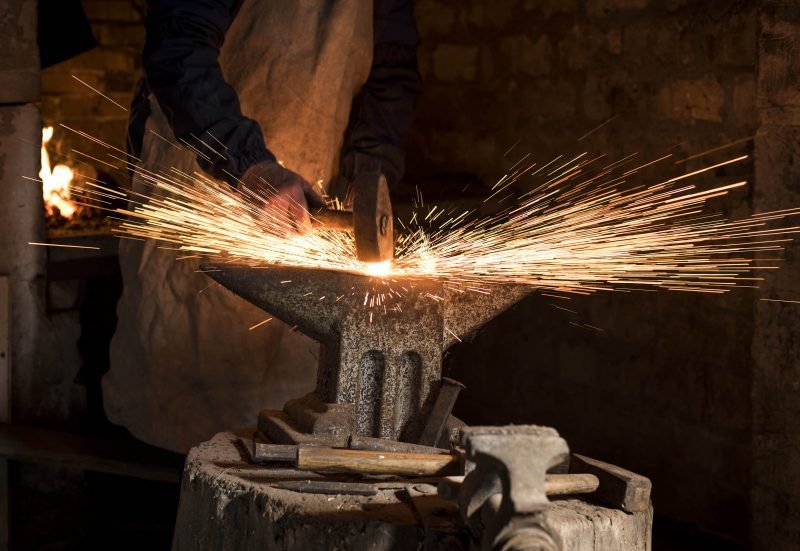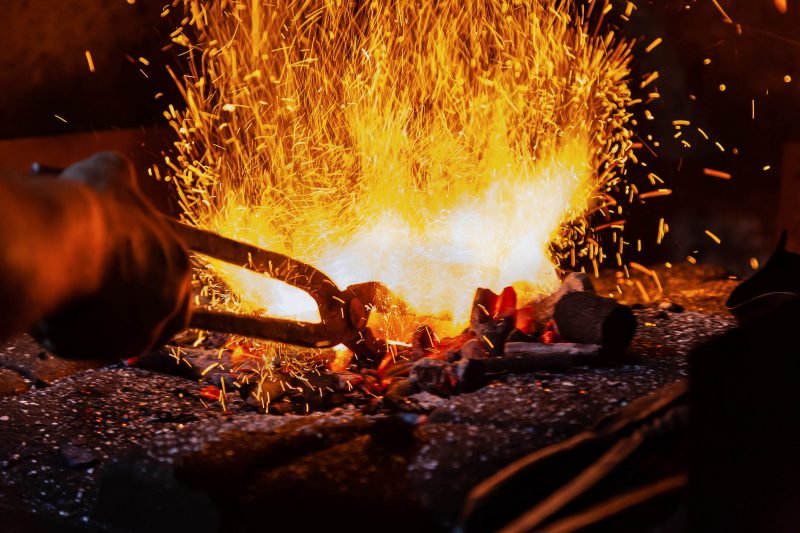The concept of forging operates simultaneously in the physical and philosophical realms, representing both an ancient manufacturing technique and a profound metaphor for human creation. At its core, forging describes the transformation of raw materials – whether metal or ideas – through the deliberate application of force and heat. This dual meaning reveals fundamental truths about how strength and meaning are created in both material objects and abstract constructs.
 In metallurgical terms, forging represents one of humanity’s earliest and most enduring manufacturing processes. Archaeological evidence from Anatolia suggests copper forging dates back to at least 7000 BCE, while iron forging emerged as a transformative technology around 1500 BCE. The basic physical principles remain unchanged across millennia: metal heated to critical temperatures becomes malleable enough to reshape through compressive forces, while retaining its essential solid structure. Modern industrial forging has refined these principles to extraordinary precision, with computer-controlled hydraulic presses capable of applying over 50,000 tons of force within tolerances measured in microns.
In metallurgical terms, forging represents one of humanity’s earliest and most enduring manufacturing processes. Archaeological evidence from Anatolia suggests copper forging dates back to at least 7000 BCE, while iron forging emerged as a transformative technology around 1500 BCE. The basic physical principles remain unchanged across millennia: metal heated to critical temperatures becomes malleable enough to reshape through compressive forces, while retaining its essential solid structure. Modern industrial forging has refined these principles to extraordinary precision, with computer-controlled hydraulic presses capable of applying over 50,000 tons of force within tolerances measured in microns.
The metallurgical transformations during forging follow precise physical laws. When steel reaches its forging temperature range of 950-1250°C, its crystalline structure undergoes critical changes. The face-centered cubic arrangement of austenite replaces room-temperature body-centered cubic ferrite, creating up to 8% more space for carbon atoms to diffuse. This thermal activation lowers the metal’s yield strength dramatically – from approximately 350 MPa at room temperature to just 50-100 MPa at forging heat. Simultaneously, the recrystallization temperature threshold is crossed, allowing new strain-free grains to form as deformation occurs.

Industrial forging processes have evolved into highly specialized operations. Closed-die forging, used for precision components like automotive crankshafts or turbine blades, confines metal within precisely machined dies that control material flow to within 0.3% dimensional tolerance. Isothermal forging maintains workpiece and dies at near-identical temperatures, enabling the forming of reactive superalloys used in jet engines. Rotary forging applies localized, incremental deformation that reduces required forces by 60% compared to conventional methods. Each technique shares the fundamental forging characteristic: plastic deformation that improves material properties while creating form.

The metallurgical benefits of forging are quantifiable and significant. A forged steel connecting rod exhibits approximately 25% greater fatigue life than a cast equivalent, with the aligned grain structure providing directional strength advantages. Forged aluminum aircraft components demonstrate 40% better fracture toughness compared to machined parts, while titanium forgings for medical implants show superior stress corrosion resistance. These improvements stem from microstructural changes: grain size typically refines from ASTM 2-3 in cast material to ASTM 5-7 in forged products, with dislocation density increasing by orders of magnitude.

Beyond the physical realm, forging serves as a powerful metaphor for intellectual and social creation. The process of forging scientific theories mirrors metallurgical practice – hypotheses are heated in the furnace of experimentation and hammered by peer review until weaknesses are eliminated. Constitutional frameworks are forged through the same cycles of stress and refinement that shape metal, with the U.S. Constitution’s checks and balances system representing a carefully tempered political structure. Personal character similarly develops through forging – challenges that might break a person instead align their psychological “grain structure” along lines of resilience.
Modern technological advances continue to expand forging’s applications and deepen its metaphorical resonance. Additive manufacturing now produces conformal cooling channels in forging dies, while machine learning algorithms optimize hammer sequences in real-time based on acoustic emissions. These innovations find parallels in social systems where data analytics help “forge” more effective policies, and where information technology accelerates the refinement of ideas. The fundamental principle persists across domains: meaningful creation requires both the heat of inspiration and the hammer of critical examination.

The endurance of forging as both practice and metaphor testifies to its fundamental insight. Whether shaping metal or societies, creating art or institutions, the process follows similar patterns. Raw material – be it iron ore or human potential – requires both the transformative power of heat and the discipline of force to reveal its strongest possible form. This universal truth explains why forging remains equally vital in today’s advanced manufacturing facilities as it was in ancient smithies, and why its language continues to describe our most meaningful creations.




